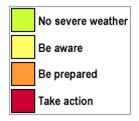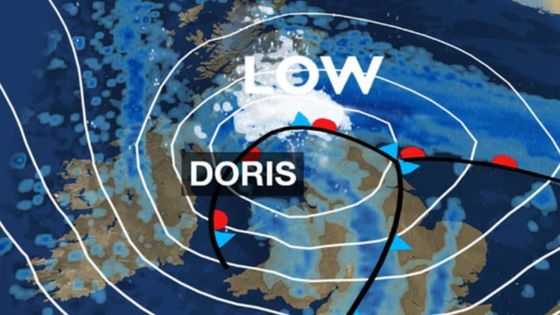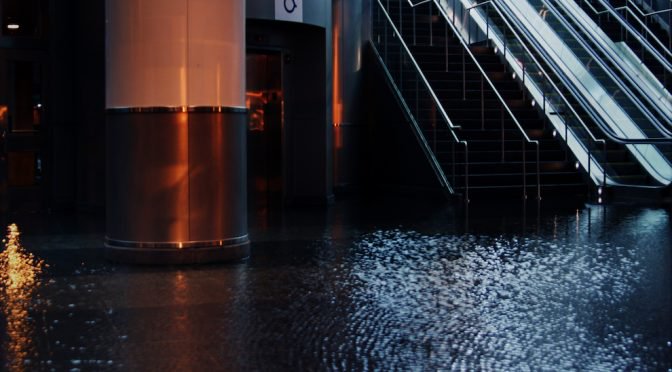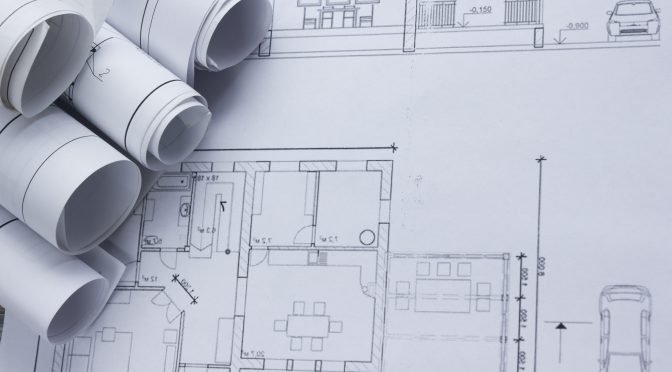23rd February 2017
On a day of widespread weather disruption, particularly in northern England, East Anglia, north Wales and the Midlands, and snow in higher areas in Scotland, it is worth looking at steps that can be taken to minimise the risk of the weather impacting upon your business.
Although weather is, by its very nature, unpredictable, you can still protect your business by anticipating the worst. High winds, fallen trees, damaged buildings and flooding are just a few of the risks you need to anticipate.
When severe weather pops up on the radar, imminent and unexpected, make sure you know how to protect your business.
National Weather Service
You can get up-to-date weather advisories from the Met Office, the United Kingdom’s National Weather Service. The Met Office warns the public and emergency responders through the National Severe Weather Warning Service of severe weather which has the potential to cause widespread disruption or endanger life.
If severe weather looms on the horizon, always check with the Met Office first for the latest warnings. To see warnings online, visit the Met Office website at www.metoffice.gov.uk/public/weather/warnings. Then, check your local forecast to determine whether your specific area faces any risk; find your location at www.metoffice.gov.uk/public/weather/forecast. Visit www.metoffice.gov.uk/services/weather to download the Met Office’s mobile apps that provide warnings and forecasts for those on the move.
Met Office Warnings
The Met Office advises the public of approaching severe weather or verifies a lack of weather-related risks by using a colour-coded system with four designations. Each colour corresponds to an established threat level determined by the likelihood of the event happening and the event’s potential impact. The colours have the following classifications, represented in the graphic below:

Under an ‘all severe weather’ warning, the colours further impart the following information about what kind of disruption to expect:
- No severe weather (green), or a very low impact, requires little effort. The Met Office does not expect the weather to have any noticeable impacts, but there might be minor issues that may require extra care while travelling.
- Be aware (yellow), or a low impact, has the potential to disrupt outdoor events or activities and cause minor traffic delays.
- Be prepared (amber), or a medium impact, means the public should take precautions when possible and anticipate longer travel times and some disruption to normal daily routines.
- Take action (red), or a high impact, calls for precautionary action and extra vigilance. The public should access the latest weather forecast and follow all orders and advice from the authorities. All non-essential journeys should be avoided. If you must make a journey, carry emergency supplies.
Be Prepared
The ‘all severe weather’ warning can be helpful for assessing general weather risks, but specific weather events can present unique hazards. Make sure your insurance policy safeguards your business against severe weather damage. Also, use these weather-specific safety tips to help you combat business damage and personal injury:
- Wind is the most common cause of damage and disruption in the United Kingdom. Secure all loose objects outside your establishment. Close and fasten all windows and doors—if your building has storm shutters, make sure to close and fasten them as well. Park any vehicles you own inside if possible or outside and away from buildings, trees and fences. When surveying the damage after the storm, stay away from exposed electrical cables.
- Flooding can stem from short periods of intense rainfalls or longer periods of heavy rain. Gauge your property’s flood risk by visiting www.environment-agency.gov.uk/flood. Prepare a flood kit of essential items for survival, including a torch, first aid kit, bottled water and non-perishable food. Guard your insurance documents, which will be essential in processing your claim. Turn off all gas, electricity and water supplies. Only re-enter your property when emergency services deem it safe. Take photos of the damage and phone us immediately.
- Thunderstorms and lightning have the potential to fry electronics—unplug all non-essential appliances. Seek shelter if possible and refrain from using anything that can conduct electricity, such as telephone lines or taps and sinks.
- Heavy snow and ice render roads difficult or impossible to travel. Halt all non-essential travel or at least wait until the roads have been gritted. Exercise extreme caution when driving, walking and shovelling.
- Dense fog creates difficult driving conditions, exacerbated by patchiness and rapid drift. Fog warnings are issued when visibility is expected to fall below 200 metres. Postpone any non-essential travel. Drive very slowly with dipped headlights, as full-beam lights shine too bright and create a ‘white wall’ effect. Proceed with caution.
- Heatwaves cause health problems and possible damage to property. Encourage employees to drink lots of cold fluids and stay out of the sunshine, especially during the hottest part of the day from 11am to 3pm. Require drivers to keep their vehicles well-ventilated to avoid drowsiness at the wheel. Keep your building cool by closing curtains or blinds.
Stay Vigilant
Heeding advice from the Met Office and local authorities is central to protecting your business and employees from severe weather, but a constant state of vigilance will boost your efforts. Consult the Met Office forecast, weather-proof your property and educate your employees about proper procedure during severe weather. For more detailed information about severe weather preparedness, visit the Met Office’s website at www.metoffice.gov.uk.
Make Contiency Plans For Your Business
Putting contingency plans in place - including Disaster Recovery Planning - could help to keep your business trading in adverse circumstances. For example, if your data is backed up in different locations, it will still be accessible; or if you have the capacity to move physical stock between different premises, you could avoid damage to goods, or make transportation of your goods easier if the road or rail network is inaccessible in a given area for a period of time.
Dependent upon the nature of your business, you may be able to make provision for employees to work from home if they are unable to make it into the office, or to work from a different location that is not impacted by inclement weather in the same way.
Having the foresight to predict the worst case scenario means that the impact of any severe weather is mitigated - prior preparation is always key to your chances of avoiding issues. However, should the worst happen...
Making a claim
Bollington Insurance has an in-house claims team, who will consult with insurers on your behalf to ensure that you get the best possible outcome. Should your home or business be affected by issues surrounding the weather - now or in the future - that require you to make an insurance claim, then call us on 01625 400205 for immediate help in processing your claim.








